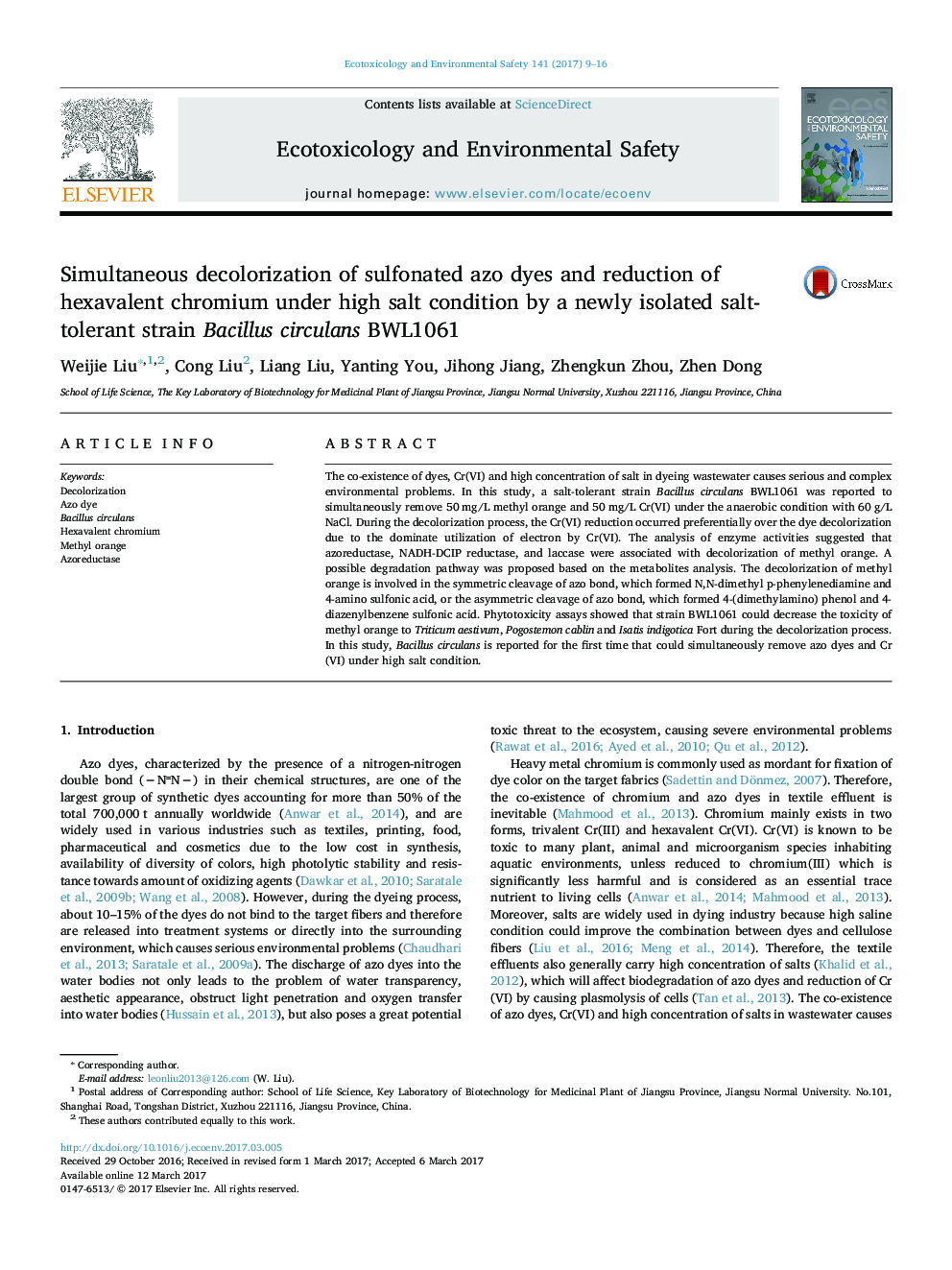| Article ID | Journal | Published Year | Pages | File Type |
|---|---|---|---|---|
| 5747920 | Ecotoxicology and Environmental Safety | 2017 | 8 Pages |
â¢Bacillus circulans BWL1061 was reported as an azo dye-decolorizing strain.â¢Simultaneous removal of azo dye and Cr(VI) at high salt condition was achieved.â¢The Cr(VI) reduction occurred preferentially over the decolorization of azo dyes.â¢Azoreductase and NADH-DCIP reductase was obviously induced during the decolorization.â¢BWL1061 shows a good potential in the detoxicity of aze dyes.
The co-existence of dyes, Cr(VI) and high concentration of salt in dyeing wastewater causes serious and complex environmental problems. In this study, a salt-tolerant strain Bacillus circulans BWL1061 was reported to simultaneously remove 50Â mg/L methyl orange and 50Â mg/L Cr(VI) under the anaerobic condition with 60Â g/L NaCl. During the decolorization process, the Cr(VI) reduction occurred preferentially over the dye decolorization due to the dominate utilization of electron by Cr(VI). The analysis of enzyme activities suggested that azoreductase, NADH-DCIP reductase, and laccase were associated with decolorization of methyl orange. A possible degradation pathway was proposed based on the metabolites analysis. The decolorization of methyl orange is involved in the symmetric cleavage of azo bond, which formed N,N-dimethyl p-phenylenediamine and 4-amino sulfonic acid, or the asymmetric cleavage of azo bond, which formed 4-(dimethylamino) phenol and 4-diazenylbenzene sulfonic acid. Phytotoxicity assays showed that strain BWL1061 could decrease the toxicity of methyl orange to Triticum aestivum, Pogostemon cablin and Isatis indigotica Fort during the decolorization process. In this study, Bacillus circulans is reported for the first time that could simultaneously remove azo dyes and Cr (VI) under high salt condition.
